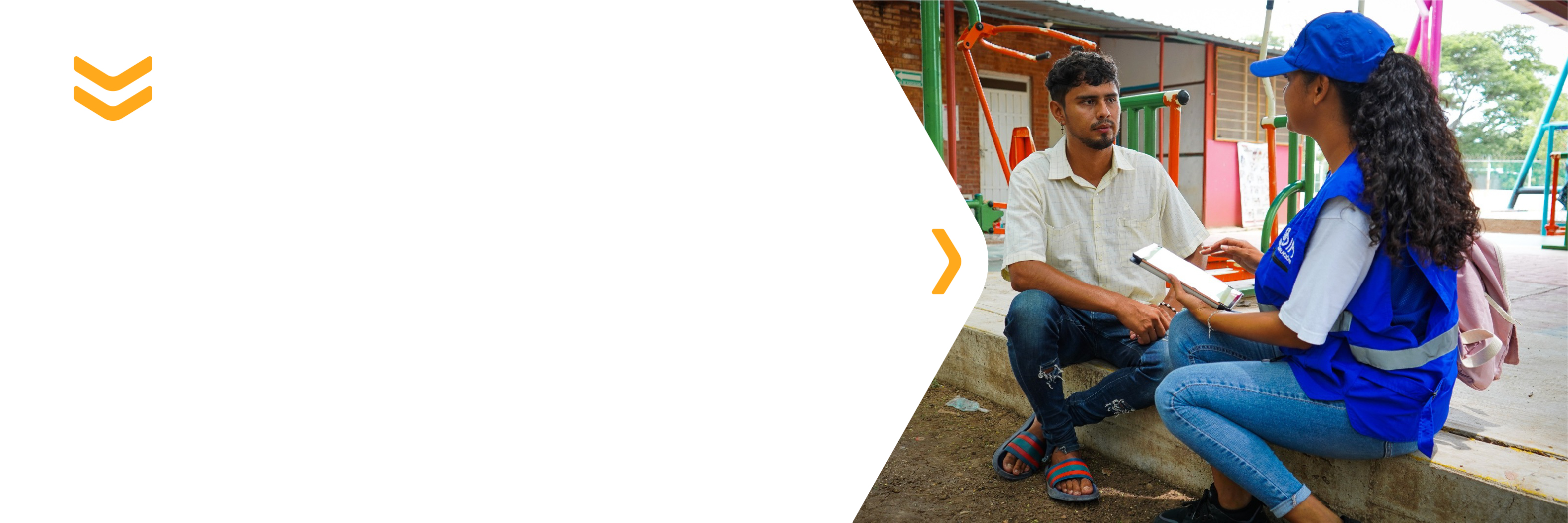The management of migration data contributes to evidence-based decision making through research, knowledge generation and the production of timely, high quality analytical reports, infographics and maps. It informs the Western Hemisphere Program on migratory trends, migrant’s characteristics and vulnerabilities, and contributes to the development of data-driven solutions for an improved, humane and human rights-based migration governance.
The documents in this section contain updated migration data in the region.
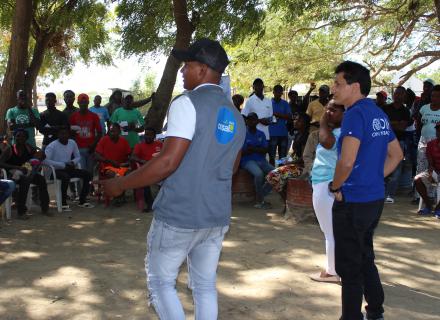
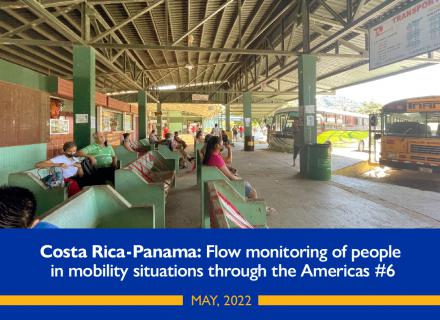
Costa Rica - Panama: Flow monitoring of people in mobility situations through the Americas #6 (May 2022)
The flow of migrant population moving through the Americas continues to be high compared to previous years and, in the same way, May represents the month with the highest number of departures registered in the MRS Los Planes, Chiriqui, equivalent to 42 percent of the records for the year. Between January and April 2022, 18,164 people registered their departure from the MRS Los Planes and the consequent entry into Costa Rica, while for May 2022 the registration is 13,248 people. Due to accessibility and language issues, there is an over representation of the surveyed population of Venezuelan nationality, therefore, the characteristics of the people surveyed were not extrapolated to all the people counted in the departure records.
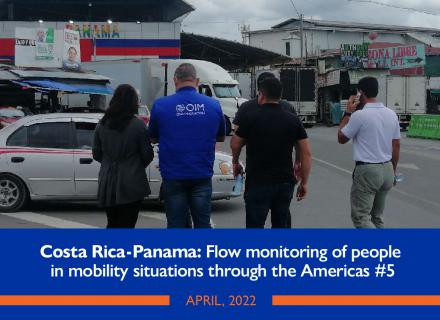
Costa Rica - Panama: Flow monitoring of people in mobility situations through the Americas #5 (April, 2022)
Between December 2021 and April 2022, an increase of 71 percent of the population originating from the Bolivarian Republic of Venezuela is identified. On the other hand, there is a route from Venezuela to Colombia, mainly to Medellin, and from there, directly to Panama. Download the report to discover other trends.
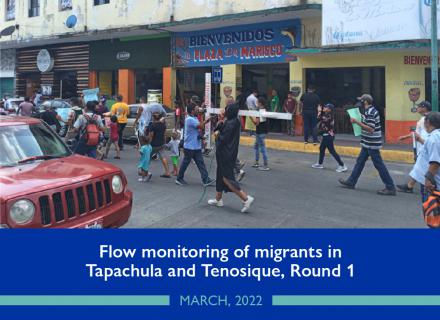
Mexico - Flow monitoring of migrants in Tapachula and Tenosique, Round 1 (March 2022)
Tapachula (Chiapas) and Tenosique (Tabasco) are the main receiving cities for migrants on the southern border of Mexico. 2021 saw record breaking numbers of migrants entering Mexico through the southern border according to the Mexican Commission for Refugee Assistance (COMAR), which reported 89,636 applications for recognition of refugee status in Tapachula and 7,153 applications in Tabasco. IOM started monitoring the situation in these cities in March 2022.
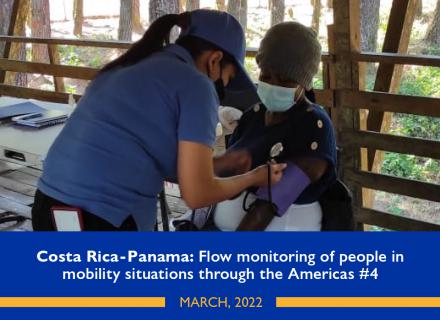
Costa Rica - Panama: Flow monitoring of people in mobility situations through the Americas #4 (March, 2022)
This report shows that the number of people in the migratory flow continues to be stable. In March, 4.837 migrants were detected departing from Panama (just an 8% increase regarding February 2022). The tendency to heat North America as a final destination continues, the Venezuelan and Cuban people are choosing the United States, while Haitians are choosing Mexico.
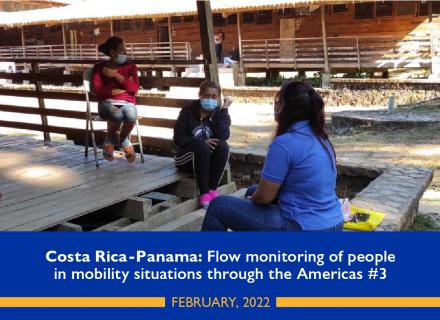
Costa Rica - Panama: Flow monitoring of people in mobility situations through the Americas #3 (February, 2022)
In Costa Rica during 2022, a steady increase in the number of migrants of this migratory flow has been identified (it has increased by 20% compared to December, 2021, when the monitoring of flows in Costa Rica began). During the second week of February, the maximum value of people heading to Costa Rica was presented. The predominance of Venezuelans in the migratory flow has been observed (43%) and a decrease in the number of people who communicate daily in Haitian Creole. Spanish predominates, but we are also beginning to see people communicating in French and Portuguese (particularly people from African countries)
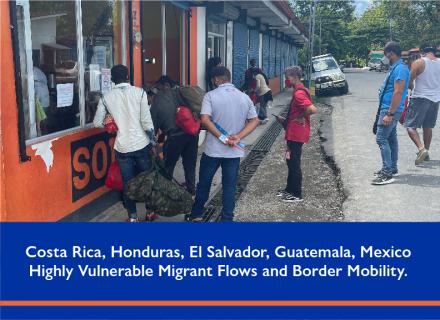
Costa Rica, Honduras, El Salvador, Guatemala, Mexico – Highly Vulnerable Migrant Flows and Border Mobility
This study is a baseline for the evaluation of irregular migration flows and the monitoring of mobility in the border localities of Costa Rica, El Salvador, Honduras, Guatemala and southern Mexico, which was developed in the context of COVID-19 in the period between June 2020 and July 2021 and analyzes migration flows from North to South America and vice versa.
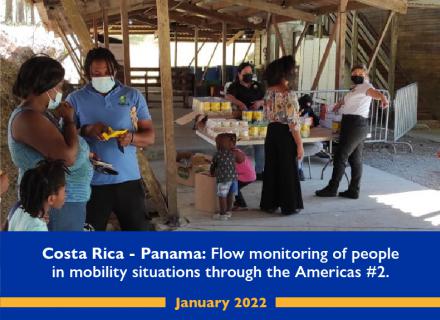
Costa Rica - Panama: Flow monitoring of people in mobility situations through the Americas #2 (January, 2022)
3.724 migrants were counted departing Panamá in January 2022, a 4% increase from December 2021. There was an increase of migrants from Senegal, representing the fourth nationality more surveyed (9%). Nevertheless, Venezuelans (43%), Cubans (15%), and Haitians (14%) still remain the main nationalities detected. 91% of migrants surveyed were travelling in groups, in which 13% of the accompanying persons were under 17 years or younger and 78% of women were travelling as families. The lack of economic resources, food, water, shelter, and transportation are the main difficulties faced by migrants during the trip.
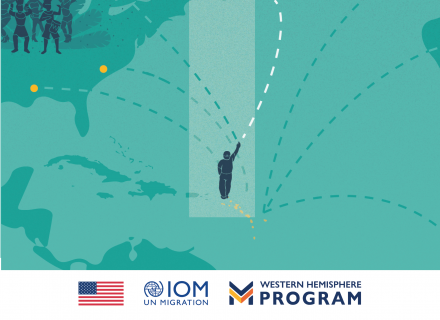
Diaspora Groups of the Eastern Caribbean
The Eastern Caribbean region has some of the highest emigration rates in the world, and yet is also known for maintaining strong ties with their home countries through social groups such as diaspora organizations. This study identified the level of organization of diaspora groups from the Eastern Caribbean sub-region, their needs, challenges they face, and their level of commitment to engage with governments from countries of origin.
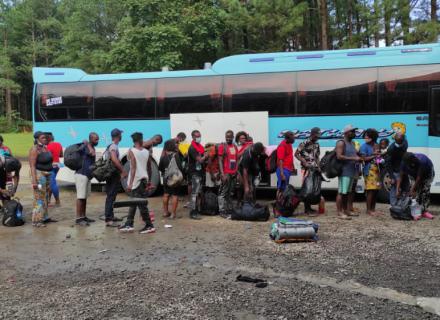
Costa Rica - Panama: Flow monitoring of people in mobility situations through the Americas #1 (December, 2021)
Since August 24, 2021, IOM Panama has published information on the irregular migration flow in Darien, Panama4 under the context of COVID-19. Based on this information, it has been identified that during 2021 the flow of people in a situation of mobility through the Americas with destination to North America is on the rise.

